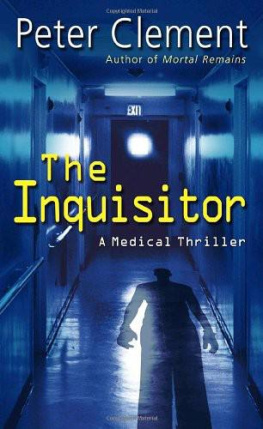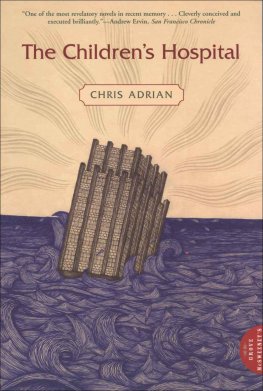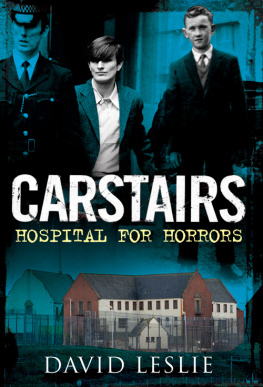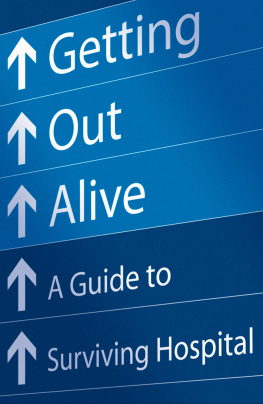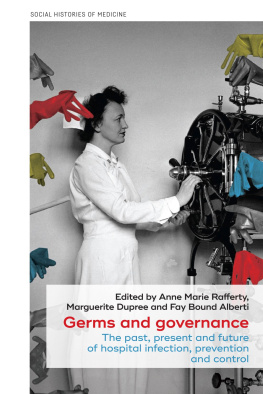Death Rounds[042-011-4.5] By: Peter Clement Synopsis: BREEDING GROUND When a nurse in Buffalodies at St. Paul's Hospital of a once-treatable bacteria, Dr. EarlGarnet and his colleagues try to remain calm. They track the origin of thesickness to University Hospital. But as the infection rages out ofcontrol there and more people fall gravely ill--including Garnet'sown wife--Earl uncovers a shocking connection between the victims. KILLING GROUND Throughout thecommunity, panic and paranoia spread as wildly as the outbreak itself, andthe entire University Hospital staff is quarantined.
Yet themastermind who created this deadly superresistant strain may be someonethey know, someone locked within the barricades. Now the sociopath hasthreatened to infect fifty more people. And that will be only thebeginning.... DEATH ROUNDS No one captures thecomplex workings of an urban hospital like former ER physician Dr. PeterClement. His new medical thriller ranges from the realm of microbiologyto raw, human rage--in a plot so chillingly authentic it could behappening right now....
DEATH ROUNDS By Peter ClementPublished by Fawcett Books: LETHAL PRACTICE DEATH ROUNDS Books published by TheBallantine Publishing Group are available at quantity discounts onbulk purchases for premium, educational, fund-raising, andspecial sales use. For details, please call 18007333000. DEATH ROUNDS Peter Clement FAWCETTGOLD MEDAL NEWYORK This book is dedicated to Vyta, Scan, and James, whose love makes all things possible. A special thanks to mylongtime friend and colleague in ER, Dr. Brian Connolly, for hissupport and advice. And a special thanks to my agent, Denise Marcil,for her generous help with this book that went far beyond what anywriter could hope for.
Sale of this bookwithout a front cover may be unauthorized. If this book is coverless, itmay have been reported to the publisher as "unsold ordestroyed" and neither the author nor the publisher may have received payment forit. A Fawcett Gold MedalBook Published by The Ballantine Publishing Group Copyright 1999 byBaskerville Enterprises, Ltd. All rights reservedunder International and Pan-American Copyright Conventions. Publishedin the United States by The Ballantine Publishing Group, adivision of Random House, Inc." New York, and simultaneously inCanada by Random House of Canada Limited, Toronto. www. randomhouse.com/BB/ Library of CongressCatalog Card Number: 9896764 ISBN 0449004503 Manufactured in theUnited States of America First Edition: March1999 10 987654321 PART ONE Incubation Chapter 1 10.00 a.m."Tuesday, October 21 She looked dead. randomhouse.com/BB/ Library of CongressCatalog Card Number: 9896764 ISBN 0449004503 Manufactured in theUnited States of America First Edition: March1999 10 987654321 PART ONE Incubation Chapter 1 10.00 a.m."Tuesday, October 21 She looked dead.
Herflesh was molded purple and white from not enough oxygen and loss ofcirculation. But as I stepped up to the stretcher where she was lying, Icould hear her breathing--gurgling noises, each ending with awhimper--and I could see the muscles between her ribs suck in and out as shestruggled for air. Her skin felt warm despite its ghastly appearanceand had a sour acrid smell, the aroma of sweat saturated with lacticacid. Brown fingertips betrayed years of smoking. At the touchof my hands she half opened her eyes and stared about her with quickdarting movements. Her pupils were wide with terror, dilated by theflood of adrenaline that goes with dying, and her gray hair splayedout wild and tangled over the pillow.
The worst was whenthose black eyes glared at me. Even in her agony, gasping and unable tomove or speak, her expression seemed to say. You sent me home. I smothered a risingwave of alarm and guilt as I placed two fingers at the right side of herneck. "Pressure?" Iasked, trying to sound in control. "Eighty over zip.Doctor," replied the nurse who was at the patient's head. "Eighty over zip.Doctor," replied the nurse who was at the patient's head.
She was applyinga translucent green oxygen mask and attaching the tube to a hissingwall outlet "I just took it. And the pulse is one-twenty andirregular." She'd already wired the woman to a cardiac monitor. The erraticbeeping accompanying the rapid squiggle on the screen above me was farfrom reassuring. "I think it'satrial fib," she added, as she watched me study the tracing. She was right. When I didn't reply,she asked, "Aren't you going to cardio vert it?" Her tone made it clearshe thought I should try to shock the heart back into a normal rhythm.
Ishook my head. "It may be theresult of the shock and not the cause." I forced myself to concentrate to keepthinking this through. Two other nurses tryingto start IVs in the woman's arms crouched at opposite sides of thetable. Bags of saline had been suspended in readiness from overheadpoles. "Got it,"announced Susanne Roberts at my elbow. She was the head nurse and, like me, atwenty-year veteran of these desperate struggles.
Without waiting for instructions, she reached up and adjusted thevalve in the clear tubingthat dangled from one of the bags of fluid. She then stepped around thefoot of the bed and came to the aid of her much younger colleague,who'djust muttered, "Damn!" The nurse at the headof the table reached past me to clip an oxygen monitor to the tip ofone of the patient's fingers. Yet another machine began beepingbehind me. "02 sat's only eighty percent," she commented grimly,meaning the blood oxygen level was dangerously low. "The first personfree," I said, "get me a twelve-lead cardiogram, and I want a portable cheststat. Dr. Dr.
Garnet," Susanne informed me as she started thesecond IV, "and X ray's been called." Then she nudged herflustered helper and quipped, "Even if he is chief of ER, I hope he knowsenough to want blood cultures because I ordered them as well." This time I barelymanaged a curt nod as I quickly slipped my stethoscope into myears and listened to the woman's heart sounds. Susanne gave me apuzzled little glance. Normally I welcomed hersassy wisecracks and joined in the fun. It was how we kept therookies relaxed. I moved the stethoscopeto the lower right side of the woman's chest. Barely any air moved inher lungs.
What little flow there was wheezed and crackled as itpassed through--what? Fluid? Pus? Both? A listen on theleft revealed more of the same. She was in warm shock, probably causedby sepsis--an overwhelming infection spread into the blood stream--withpneumonia being the most likely primary source. Yet I continued tocheck elsewhere. Stepping around the tangle ofECG wires Susanne washooking up, I palpated the abdomen and examined the lower extremities.Nothing. But when I moved back up to the patient's head and flexed herneck, checking for stiffness and evidence of meningitis, her eyesstill followed me and I had to endure that stare again. "Okay, everyone,this is an infectious case, septic shock, probably from overwhelmingpneumonia of some kind, and isolation is in force." We were already wearingmasks and gloves as a general precaution. "Okay, everyone,this is an infectious case, septic shock, probably from overwhelmingpneumonia of some kind, and isolation is in force." We were already wearingmasks and gloves as a general precaution.
Isolation meant donningsurgical gowns for additional protection against bodily fluidsand discarding all this protective gear in a bin at the door whenever weleft the room. Such measures were intended to protect us and theother patients in the rest of the hospital. Hopefully. The circus I was aboutto create wasn't conducive to the confinement of deadly microbes. People were running in,fumbling with back ties on their half-done-up masks and gowns. "Keep the TVsopen, raise her legs, but give me vitals every few minutes. "Keep the TVsopen, raise her legs, but give me vitals every few minutes.
We don't wantto overload her. And get me an inhalation therapist fast. We needto intubate this lady and help her breathe now!" But my words soundedhollow. When I turned to speak specifically to Susanne, I found ithard to look her in the eye. "When whoever youcalled to take blood cultures gets down here, have him culture andGram-stain everything else as well--sputum, urine, CSF, even stool--and repeatthe blood cultures again in thirty minutes if we get that far."While talking, I was already struggling into a green OR gown I'd gotten fromone of the racks where we kept gear for dirty cases. "Get one of ourresidents to do the LP," I added, praying that no one would see through myphony show of calm.
Next page

